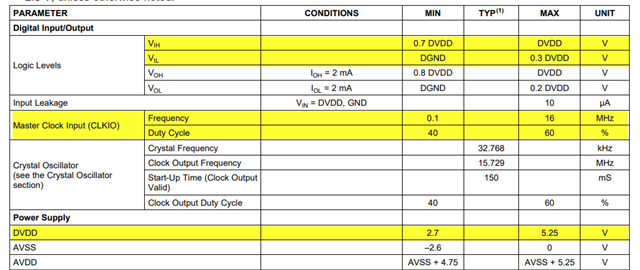Other Parts Discussed in Thread: ADS1258
Tool/software:
Hi,
my customer wants to use an external clock, but is not sure which logic level height is needed for the clock-signal.
Can you provide further requirements for the clock signal (frequency stability, jitter e.g.)?
Thanks



